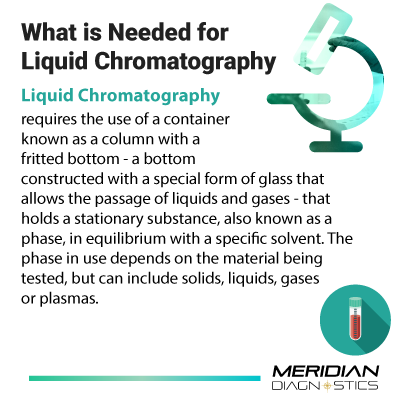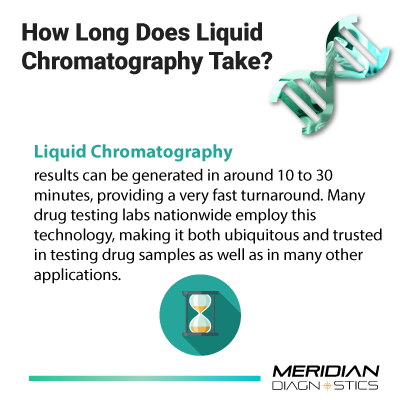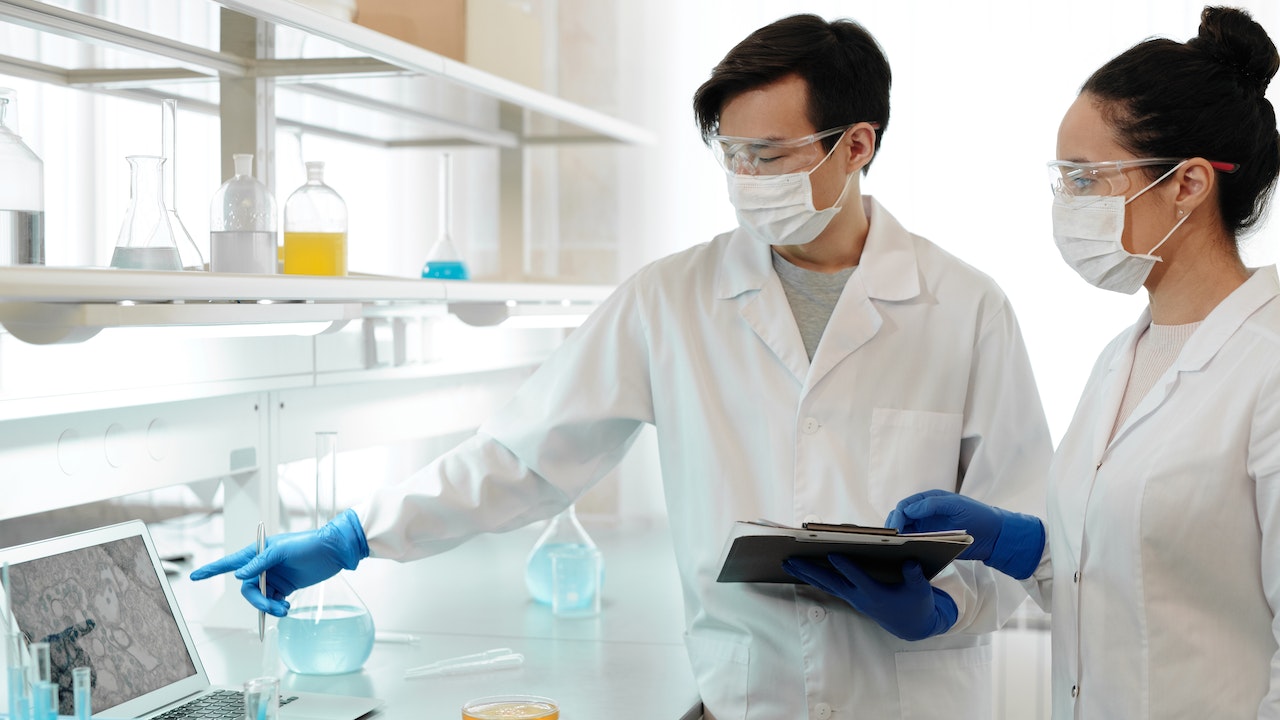Liquid Chromatography – The Important Tech of Drug Detection
The prevalence of drug testing in many different capacities, from pre-employment screenings to testing within a treatment facility to prevent against relapse, is well known, even by those outside of the industry. Many individuals have been the subject of drug testing themselves, whether as a job candidate, a part of the criminal justice system, or in any other application.
In spite of the understood importance of drug testing, the science behind it is far less common – even though understanding the ways in which substances are tested can greatly influence the interpretation of results. In many cases, liquid chromatography plays a key role in accurately testing samples and determining the presence of illicit substances.
What Is Liquid Chromatography?
 Liquid chromatography (LC) is a method that allows for the separation of a sample into many different parts. When one solution comes into contact with a second material phase, either solid or liquid, the varying solutes will interact with one another based on individual differences in partitioning, ion exchange, absorption, and size. In the context of drug testing, this can allow for the separation of drug metabolites from a sample like saliva, blood, or urine.
Liquid chromatography (LC) is a method that allows for the separation of a sample into many different parts. When one solution comes into contact with a second material phase, either solid or liquid, the varying solutes will interact with one another based on individual differences in partitioning, ion exchange, absorption, and size. In the context of drug testing, this can allow for the separation of drug metabolites from a sample like saliva, blood, or urine.
The science behind liquid chromatography is fairly straightforward. Liquid chromatography requires the use of a container known as a column with a fritted bottom – a bottom constructed with a special form of glass that allows the passage of liquids and gases – that holds a stationary substance, also known as a phase, in equilibrium with a specific solvent. The phase in use depends on the material being tested, but can include solids, liquids, gases, or plasmas.
To perform the test itself, the substance to be tested is added to the container, followed by another layer of solvent. The mixture of these materials passes through the container at varying rates based on the differences in behavior, resulting in a separation of the components in the testing sample.
Another variation, LC-MS, or liquid chromatography-mass spectrometry, is also popular in scientific testing. This alternative blends the abilities of liquid chromatography with a way to analyze the mass and makeup of the individual substances identified. In essence, these two functions work as two separate parts of a whole: liquid chromatography separates out the components while mass spectrometry allows for the identification of structural identity. In the context of drug testing, most labs employ LC-MS due to the more specific and sensitive nature of results.
“Meridian Diagnostics utilizes liquid chromatography as our Platinum Standard for analytical quantification of our toxicology esoteric testing” says Rhyan Walcott, CEO of Meridian Diagnostics. This technology filters analytes of interest from interfering substances which prevents false negatives and false positives. As a significant improvement over the existing MS methodology, LC-MS/MS provides rapid, unequivocal and quantitated tests of targeted drugs at trace levels in a complex matrix. Every test sample undergoes three levels of review, this means you can trust Meridian Diagnostic’s results when making pain management decisions for your patients.
A History of Liquid Chromatography
 Liquid chromatography may seem like a very new and innovative way to approach the separation of materials, but this isn't actually the case. The foundation for this procedure was introduced in 1903 by a Russian botanist studying plants who was attempting to separate plant pigments using chalk – the original concept of a stationary phase. The pigments separated out using this method were different colors, hence the name "chromatography."
Liquid chromatography may seem like a very new and innovative way to approach the separation of materials, but this isn't actually the case. The foundation for this procedure was introduced in 1903 by a Russian botanist studying plants who was attempting to separate plant pigments using chalk – the original concept of a stationary phase. The pigments separated out using this method were different colors, hence the name "chromatography."
The technique behind this process was pushed further in the 1940s by scientists Archer John Porter Martin and Richard Laurence Millington Synge, who introduced the idea of using more than one liquid phase for more precise results. Further research in the 1970s led to higher tech instrumentation, creating more precise results, in a way that heavily influenced how this procedure is performed today. Even though this science seems rudimentary, especially as it was first engineered over 100 years ago, liquid chromatography remains a common practice.
The Availability of Liquid Chromatography
Today, liquid chromatography-mass spectrometry is a popular choice for drug tests due to the ease of use, widespread availability, and rapid results. In comparison to other methods, LC and LC-MS can be performed in virtually any testing facility. It can be managed with limited training on the part of those utilizing equipment, allowing for a testing facility staffed primarily by technicians rather than highly trained scientists that are comparatively more challenging to hire. LC-MS is highly accurate as well, leading to a reduced likelihood of false positives.
Liquid chromatography results can be generated in around 10 to 30 minutes, providing a very fast turnaround. Many drug testing labs nationwide employ this technology, making it both ubiquitous and trusted in testing drug samples as well as in many other applications.
The Limitations of Liquid Chromatography
Despite its valuve, liquid chromatography does have some drawbacks and limitations in its use in drug testing. Among the most important is the additional step LC-MS testing adds to the process drug testing. This is generally not the first step employed; rather, it is a follow-up to confirm results, generally for tests that come back positive. By including this as a part of the drug testing process, an extra expense and an additional time demand are required for accurate results.
Further, results, while generally reliable, aren't 100% – which is true of most forms of scientific testing. It is not always a good choice for volatile substances or compounds that are at risk of being irreversibly adsorbed, leaving no trace behind to test. In these situations, gas chromatography-mass spectrometry is often a better alternative. Issues can also arise due to things like the use of a sample phase that shares too many similarities with the material being tested, resulting in inaccurate reading.
In addition, LC-MS technology can be costly. While liquid chromatography alone is more reasonable, the inclusion of mass spectrometry includes more expensive equipment that isn't necessarily affordable.
Science plays a large role in the success of drug testing, with liquid chromatography holding a leading role. As an easy and reliable way to generate results, LC-MS testing provides indispensable resources for employers, treatment facilities, and medical practices around the country.


